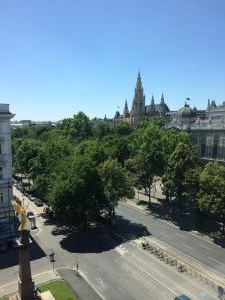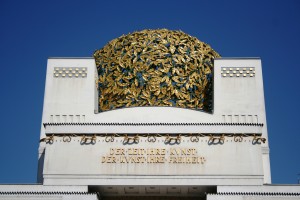As promised, here are the details and registration information for the Responsible Art Market initiative's inaugural US event on May 23, 2019 at Columbia University. The preliminary program is below (some sponsors still pending), sign up today today to attend (free)!
Building a Responsible Art Market in New York May 23, 2019
Topics: Jane Levine, Switzerland, Appraisers Association of America, Suzanne Gyorgy, Sotheby's, Megan Noh, ARTnews, Art Law Centre, University of Geneva, Responsible Art Market initiative, Justine Ferland, CitiBank, PAIAM, Sarah Douglas, Birgit Kurtz, Gibbons P.C., Rebecca Fine, Athena Art Finance Corp., Pryor Cashman, Linda Selvin, Jennifer Mass, Scientific Analysis of Fine Art, LLC
Recap and Analysis: Responsible Art Market Initiative Launched in Geneva
I was pleased to attend last week in Geneva “Building an Art Market for the Future—Guidelines for Countering Money Laundering and Terrorist Financing Threats” hosted by the Fondation pour le Droit d’Art (Art Law Foundation) and the Art Law Centre of the University of Geneva. The conference was the official launch of the Responsible Art Market initiative, and offered valuable, market-focused discussion about the risks of money laundering and terrorist financing in the art market. Refreshingly, the day’s panel discussions focused on best practices and goals, rather than the oft-heard lamentations about problems with the art market. The implicit point that came through was a powerful one: as both private sellers and law enforcement speakers explained, art dealers are not engaged in large-scale shadowy financial dealings. But art dealers and buyers are at serious risk of being used by criminals engaged in money laundering, which can have serious consequences. Because willful blindness is no defense, the conference and the initiative provided valuable practical advice.
Topics: Pierre Gabus, Anne Laure Bandle, Art Dealers Association of Switzerland, Art Law Foundation, Geneva, Sandrine Giroud, Luxembourg, Switzerland, Art Law Centre, University of Geneva, AML, Terrorist financing, Sylvia Furrer Hoffmann, Ricardo Sansoletti, Ursula Cassani, Simon Studer, Mathilde Heaton, Fondation pour le Droit d’Art, Jean-Bernard Schmid, Rakhi Talwar, Ralph Wyss, Responsible Art Market initiative, Money laundering, Stiftung Kunsthalle, Bern, Deloitte
Gurlitt Task Force Issues Fifth Recommendation for Restitution
Sophisticated Analysis of Adolph von Menzel Drawing Distinguishes Itself from Recent Revisionism Elsewhere
As the original term of the Gurlitt Task Force (Taskforce Schwabinger Kunstfund) winds down, the panel has issued a report on a work that it deems appropriate for restitution: Interior of a Gothic Church (Inneres einer gottischen Kirche) by Adolph von Menzel (pencil drawing, signed/dated 1874). The drawing has been called Church in Hofgastein in some English language articles.
Topics: Interior of a Gothic Church, Hildebrand Gurlitt, Cornelius Gurlitt, Nazi Germany, Inneres einer gottischen Kirche, Dresden, Gurlitt Task Force, Adolph von Menzel, Nazi-looted art, Gurlitt Collection, Ernst Julius Wolffson, Washington Principles on Nazi-Looted Art, Advisory Commission, Munich, Albert Martin Wolffson, Salzburg, Restitution, Catrin Lorch, Bavaria, World War II, Switzerland, Süddeutsche Zeitung, Austria, Kunstmuseum Bern, Federal Republic of Germany, Raubkunst, Taskforce Schwabinger Kunstfund, Elsa Helene Cohen, Limbach Commission, Jörg Häntzschel
Backwards, Not Forwards: German Cultural Ministry Submits Revised Cultural Heritage Protection Law
After two months of scathing criticism, the German Ministry of Culture has submitted a watered-down, but still problematic, revision to its Cultural Heritage Protection Law. Back in July, Minister of Culture Monika Grütters announced the initial proposal to amend Germany’s law, or Kulturgutschutzgesetz. The revision, however, is optical at best, and seems targeted only to soften criticism while still taking a regressive view of cultural property that is more at home in the 18th century than the 21st. It will probably pass, to the detriment of forward thinking art market players who will move their trade elsewhere.
Topics: cultural property, Georg Baselitz, German Cultural Ministry, U.S., Restitution, UNESCO, Switzerland, Austria, Kulturgutschutzgesetz, Gerhard Richter, Museums, Andy Warhol, Monika Grütters, Cultural Heritage Protection, Native American Graves Protection and Repatriation, NAGPRA
“Between Fairness and Justice for Successors and Possessors”—an Upcoming Conference at the Oskar Reinhart Museum in Winterthur
I won’t be in the neighborhood, but the Oskar Reinhart Museum in Winterthur (Switzerland) is putting on a conference for the second year in a row on August 31. 2015 wrestling with the issue of “flight goods” in particular. “Flight goods” refers to property that was not stolen outright, nor sold under duress, but left behind because of a flight in haste from persecution. Awareness has increased in recent years about this as a category of looted property to be addressed. As with other categories, issues of law, morality, and the rights of subsequent good faith owners/possessors make for interesting discussions. Notable presenters include Matthias Frehner, whose Kunstmuseum Bern is grappling with the Gurlitt bequest, and Anja Heuss, whose Staatsgalerie Stuttgart recently restituted a work to the heirs of I. Rosenbaum. All the speakers and topics look excellent.
Topics: Berlin, Dr. Peter Raue, Walter Feilchenfeldt, Esther Tisa Francini, Museum Rietberg, Olaf Ossmann, Cornelius Gurlitt, Marc Fehlmann, Art Dealers Association of Switzerland, Between Fairness and Justice for Successors and Po, Oskar Reinhart Museum, Anja Heuss, Kulturstiftung der Länder, Deutsches Zentrum Kulturgutverluste, Claudius Ochsner, Matthias Frehner, Alexander Jolles, Winterthur, Dr. Stephanie Tasch, Kunsthandelsverband der Schweiz, Karin Salm, Universität Salzburg, Thomas Buomberger, Restitution, Events, Johannes Nathan, Looted Art, World War II, Staatsgalerie Stuttgart, Switzerland, Kunstmuseum Bern, Andrea Baresel-Brand, flight goods, Zürich, Prof. Dr. Georg Graf, Radio SRF 2, I. Rosenbaum, Sibylle Ehringhaus
The Woman in Gold: Why the Altmann Case Matters
The release last week of The Woman in Gold, the feature film adaptation of The Lady in Gold by Anne Marie O’Connor, starring Helen Mirren and Ryan Reynolds as Maria Altmann and her attorney E. Randol Schoenberg, respectively, as well as Tatiana Maslany as the younger Altmann and Daniel Brühl as Austrian journalist Hubertus Czernin, is an important opportunity to reflect on the legal importance of the case. Even today, the case provides lessons about the way some victims are still treated, and how one individual can make sure the past is never forgotten. The looting of Jewish art collections was a concerted effort whose prominence should never be forgotten. And perhaps even more, it robs those who did survive of the dignity of remembering their family experiences. Consider: the next time you gather with your extended family, look around the room. Pick something that you’re accustomed to seeing when the family meets. Now, imagine it had been stolen or surrendered under duress, and was hanging on the wall of a national collection that denied it had been taken. How would you feel? This is the dilemma faced by many claimants, and it is precisely why Altmann matters so much.
Topics: Maria Altmann, The Lady in Gold, Adele Bloch-Bauer, The Woman in Gold, Daniel Brühl, Germany, Nazi-looted art, Academy of Fine Arts, Foreign Sovereign Immunities Act, Hitler, Tatiana Maslany, Anne Marie O’Connor, Supreme Court, A Few Good Men, Belvedere, E. Randol Schoenberg, World Jewish Congress, Stiftung Preussischer Kulturbesitz, Ryan Reynolds, FSIA, expropriation exception”, Restitution, Neue Galerie, World War II, Foreign Sovereign Immunities, Switzerland, Ferdinand Bloch-Bauer, Helen Mirren, Museums, Fritz Altmann, Gustav Klimt, Vienna, Welfenschatz, Hubertus Czernin, Ronald Lauder, Austrian National Gallery
Léone Meyer’s Claims for Pissarro Transferred to Oklahoma
A U.S. District Court judge has taken the recent invitation of the Second Circuit Court of Appeals, and transferred to Oklahoma a lawsuit by Léone Meyer over ownership of a Camille Pissarro painting at the Fred Jones, Jr. Museum at the University of Oklahoma. The case will now proceed in Oklahoma, where the museum seems likely to assert both sovereign immunity under Oklahoma law, as well as an argument that transfers in Switzerland conferred legal title to the museum as a successor to those transfers. However counterintuitive it seems, it may yet be that a court could agree with Meyer that the painting was stolen, but agree with Oklahoma that a Swiss litigation in the 1950s about whether it was sold to a good faith buyer means that Oklahoma holds full title and ownership.
Topics: David Findlay Jr. Inc., due process, third party beneficiary, Metropolitan Museum of Art, Raoul Meyer, Nazi Occupation, American Alliance of Museums, University of Oklahoma, Aaron and Clara Weitzenhofer, Judge Colleen McMahon, Fred Jones Jr. Museum of Art, AAM, Vichy, La bergère rentrent des moutons, Association of Art Museum Directors, Restitution, David Findlay Galleries, World War II, CPLR 301, Switzerland, Leone Meyer, long art statute, Camille Pissarro, Museums, personal jurisdiction, AAMD, Christoph Bernoulli, Swiss judgment, Rep. Mike Reynolds
Claim for Pissarro Painting Could be Heading to Oklahoma
An interesting development happened last week in the case seeking restitution of a Camille Pissarro painting held by the University of Oklahoma. The plaintiff Leone Meyer appealed the May 14, 2014 judgment that found that the courts of New York lacked jurisdiction over the Oklahoma-based defendants affiliated with the University of Oklahoma (the painting is in the Fred Jones, Jr. Museum of Art). Without ruling on the jurisdictional basis for dismissal, the 2nd Circuit Court of Appeals remanded the matter back to the trial court for consideration of whether the case should be transferred to Oklahoma. It seems likely that it will be, or even if not, that she will file a new case there and the matter will continue. It’s splitting hairs, but many of the headlines suggesting that the Court of Appeals had revived Meyer’s claims are not quite right; Meyer’s claims have still never been addressed on the merits (so they were never dead) and, as discussed below, another forum remains available to her. The larger point is that a second round is likely coming in Oklahoma.
Topics: David Findlay Jr. Inc., Raoul Meyer, Nazi Occupation, University of Oklahoma, Aaron and Clara Weitzenhofer, Judge Colleen McMahon, Fred Jones Jr. Museum of Art, Vichy, La bergère rentrent des moutons, Restitution, David Findlay Galleries, World War II, Switzerland, Leone Meyer, Camille Pissarro, Museums, personal jurisdiction, Christoph Bernoulli, Swiss judgment
Development May be Coming Soon In Klimt Beethoven Frieze Case
Der Standard in Austria reported this week that a recommendation is expected on Friday in the claim by the heirs of Erich Lederer to the famous Klimt Beethoven Frieze in the Secession Museum in Vienna. The issue in this case is not a Nazi-era theft per se, but the effect of Austria’s post-war restitution law, which returned ownership to the Lederer family (it was looted from Erich Lederer under the Nazi) but forbade export, leading to a sale. The Lederer family has argued that that amounts to a second taking. As I made no secret last week with regard to Germany’s intended National Cultural Property Designation for the Welfenschatz that my clients have sued to recover, this kind of export prohibition is now recognized for what it is: an effort to hinder restitution. The same kind of claim was made against the Leopold Museum in Vienna for Portrait of Wally, namely, the allegation that the post-war sale was not valid under the circumstances because of the export prohibition. That case settled in 2010, the painting remains in Vienna.
Topics: BGBl. I Nr. 181/1998 i.d.F. BGBl. I Nr. 117/2009, Erich Lederer, London, sales under duress, Nazi-looted art, Beethoven Frieze, Jugendstil, Restitution, Austrian Cultural Ministry, World War II, Leopold Collection, Switzerland, Secession Building, Der Beirat gemäß § 3 des Bundesgesetzes über die R, Portrait of Wally, Austria, 14th Secession Exhibition, Wiener Secessionsgebäude, Zürich, Gustav Klimt, (Kunstrückgabegesetz), Vienna, Anschluss, Dr. Rudolf Leopold, Leopold Museum, Limbach Commission, New York, Beethoven’s Ninth Symphony
Austria Restitution Advisory Commission Defers Klimt Beethoven Frieze Decision, No Reasons Given
There was a curious non-development today in Austria concerning the dispute over Gustav Klimt’s famed “Beethoven Frieze” located in the Secession Building in Vienna. At issue is whether a post-war sale by Jewish survivors to Austria of a famous painting that the law of the time did not allow to be exported can be considered a sale under duress and justify restitution.
Topics: Erich Lederer, London, sales under duress, Nazi-looted art, Beethoven Frieze, Germany’s Limbach Commission, Jugendstil, Restitution, Austrian Cultural Ministry, World War II, Leopold Collection, Switzerland, Gesamtkunstwerk, Secession Building, Der Beirat gemäß § 3 des Bundesgesetzes über die R, Portrait of Wally, Austria, 14th Secession Exhibition, Museums, Wiener Secessionsgebäude, Zürich, Gustav Klimt, (Kunstrückgabegesetz), Vienna, Anschluss, Dr. Rudolf Leopold, New York, Beethoven’s Ninth Symphony

.jpg)





